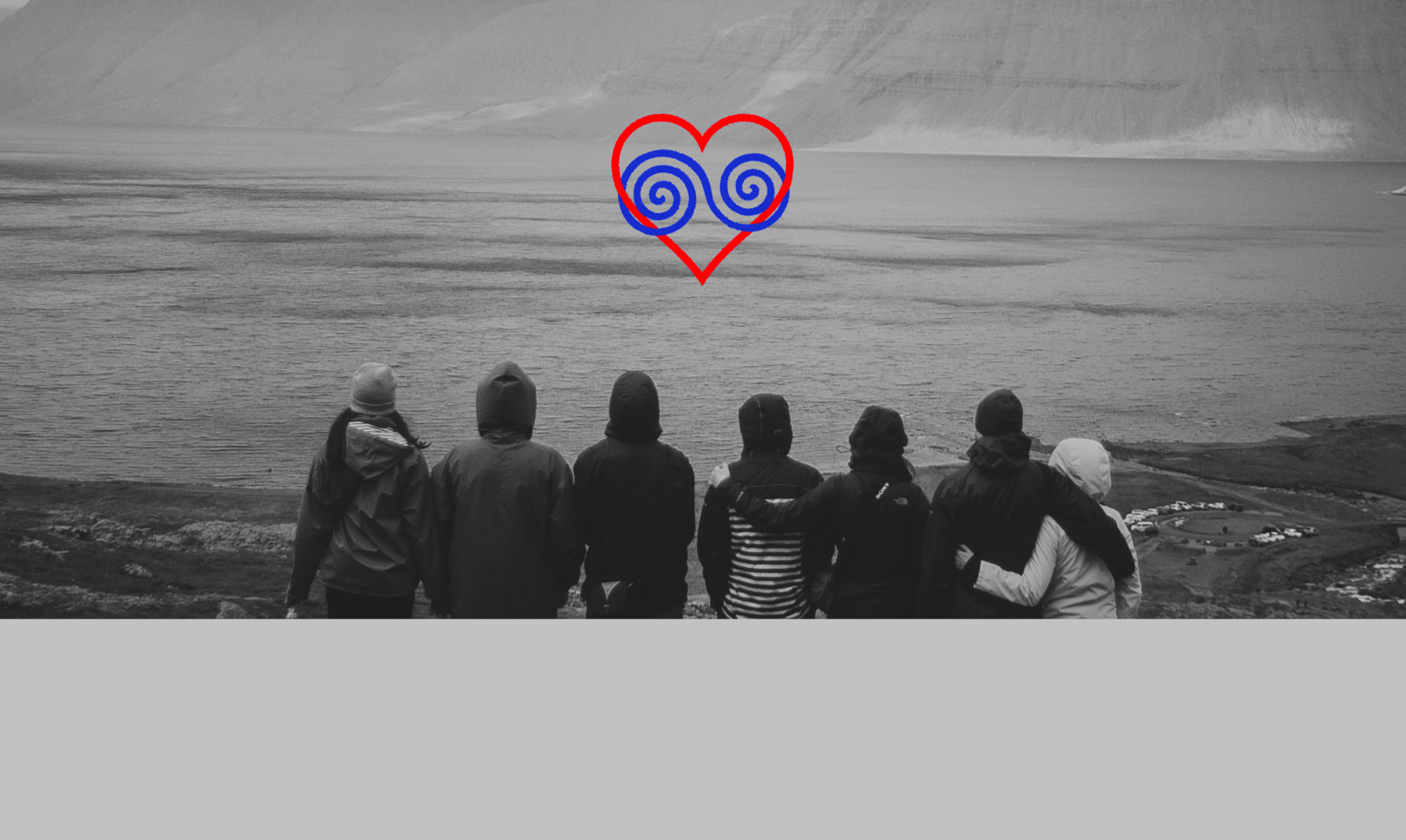Meaningful Relationships (Part 3)
»The nature of our immortal lives is in the consequences of our words and deeds.
Our lives are not our own. From womb to tomb we are bound to others, past and present. And by each crime and every kindness, we birth our future«
Revelation of Sonmi; David Mitchell, Cloud Atlas, 2004

With the third part of this series I would like to add another central keystone to the arch of oligoamorous thinking.
In the preceding parts 1 and 2, I have worked towards the in my view crucial theme of “categorylessness” regarding the circle of participants in significant relationships, by which I mean to propose that – especially when our most trusting and intimate relationships are concerned – we should no longer subject ourselves to predetermined frameworks regarding their characteristics and their degree of possible interaction.
In this way, we could regain for ourselves the freedom of experiencing our close relationships in all their nuances, facets and shades – and likewise, we would thereby have the chance to free ourselves from the limits of a dictate of social standardisation that may restrict us in our freedom of thought, imagination and creativity, both in loving as well as in the actual arrangement of our relationships themselves.
Anyone who has read this last sentence might now be surprised at its supposedly “radical” character and ask me whether this is not in the end precisely the call for “total liberty” in matters of love and relationships, which I myself have so often criticised since the beginning of my bLog project as a rather selfish and impulsive proclamation of unrestricted personal freedom in multiple relationships…
No – I don’t think so at all.
My answer to this is: If the category (of a relationship) is no longer relevant, then the quality of the respective connection inevitably becomes significantly more important.
The authors of the polyamory guidebook “More Than Two¹“, Franklin Veaux and Eve Rickert, wrote on this very topic in the conclusion of their book:
»It is important, and useful, to come back often to the root of Polyamorie: Love.
We have relationships because we, as human beings are wired to love. And without love as the core of our relationships, and as the principle we come back to in everything we do in those relationships, the other principles – as indispensable as they are – aren’t going to get us anywhere. Love is the great clarifier of values. Without it, whatever framework we create will remain hollow, ultimately lifeless.«
With this, in my view, quite excellent description, this team of authors reinforces my oligoamorous conviction that, precisely because of this, the symbiosis of freedom and commitment in human relationships isn’t an awkward contradiction, but – on the contrary – is a profound “core component” (see also Entry 7).
And when we accept love as our “clarifier of values”, we are also accepting the (highly oligoamorous) qualities of wholeness and integrativity – and we are thereby also embracing the “Golden Rule” – both in the Gandhian sense of “We are one, you and I. – I cannot harm you without harming myself.” as well as according to the literal maxim “Treat others as you would wish them to treat you likewise.”
As far as I am concerned, the basics of this correlation were first and foremost set out in detail by the English politician, author and Enlightenment philosopher Anthony Ashley Cooper, 3rd Earl of Shaftesbury (1671-1713).
Shaftesbury wrote that although the order of nature is only fragmentarily known to us [which any quantum- or astrophysicist will surely gladly confirm even today], e.g. the physical design and function of living beings would always reveal a common purpose, a goal of life. Each of them would possess a natural endowment that should serve its individual well-being, its “private good”. This is defined as that which is in harmony with the natural destiny of the living being. Instincts, passions and emotions would aim to achieve and maintain this optimal state for the individual.²
About 220 years later, by the way, Shaftesbury’s astute thinking received fascinating support on account of the emerging science of psychology.
There, at the beginning of the 20th century, the two Freudian students Carl Gustav Jung (on the basis of analytical psychology) and Alfred Adler (on the basis of individual psychology) had rejected the overly causal ideas of their mentor and had instead reached the view that a living being had always to be regarded as an “individual”, which, according to Adler, for example, would always strive towards its “optimal state (Shaftesbury!)” as a goal in order to overcome the vulnerability at the beginning of its life. Jung and Adler also agreed that every living being should thus be considered in-dividuus (from Latin: in-divisible) in its development, a lifelong process that C.G. Jung even called “individuation” (meaning: “inseparability”/”becoming whole”).
It is quite obvious here that psychology thereby adopted a holistic approach (see Entry 57), which intended to describe a living being and its existence as “more than merely the sum of its (experiential) parts”.
In his time, by the way, the philosopher Shaftesbury had also already acknowledged the underlying principle of holism, for he concluded that every living being would likewise always be linked to the well-being and continuity of its species or community. Therefore, the individual being as a “private system” would always also be integrated into a “more comprehensive system” [an almost “ecological” thought!]: into the system of its species, into the totality of the plant or animal world [i.e. into biodiversity!], into the global (eco)system [keyword “Gaia hypothesis“], the solar system and finally the structure of the universe. All systems would ultimately together form the structure of the cosmos, and each of them would be determined by its relation to the whole. The systems would support each other and thus stand in a relationship of interaction to each other and at the same time to the totality.
This proved for Shaftesbury that the individual systems could always contribute to the whole, as it also revealed to him at the same time that there was a pronounced consonance between what was individually beneficial and what was beneficial in general.
Shaftesbury’s conception thus includes in my view exactly the incentive to heed the “Golden Rule” in every kind of relationship, as well as the invitation to approach all our relationships precisely for this reason in-dividually (i.e. holistically and NOT compartmentalised).
The approach of Shaftesbury wanted and wants to show that the goal of every human being should be the accomplishment of his*her life as a free individual, contributing and embedded in his*her community [attached and free at the same time!]
As a prerequisite, even Shaftesbury demanded: As a communal being, humans can only realise the autonomy to which they are predisposed without interference if the (superordinate) systems to which they belong are also free and thus a free interaction is possible.
I don’t think I’ve read a more apt endorsement of this kind of dynamic concerning self-chosen relationships, not even by the formidable community researcher Scott Peck himself:
Starting point is invariably the individual who, by virtue of the fact that he or she (quasi “by nature” or by means of his or her cooperative goal-oriented disposition) carries within him or her an awareness of what is beneficial, is therefore concerned about more than just his or her own well-being – which in turn enables him or her to envisage the well-being of (his or her) entire system AND thereby to recognise his or her own prosperity as part of it.
To my mind, this last sentence merges the need-management of Abraham Maslow, Carl Rogers and Marshall Rosenberg with the definition of interrelated intimacy (see footnote³) by S. Cohen, L. Underwood and B. Gottlieb.
The “categorylessness” that I would like to attain is thus by no means an egocentric “total liberation strike” as a quick fix against assumed annoying restrictions by our fellow human beings.
On the contrary, categorylessness regarding our meaningful relationships requires, in my view, empowered individuals who are able to make conscious volitional decisions and who at the same time are prepared to accept the responsibility that this involves for their creative potential.
In 2011, neurobiologist and author Gerald Hüther wrote in his book “Who we are and what we could be” that »…adulthood would mean a certain desire to assume responsibility…«, as well as the following quote (originally Entry 4):
»There is no freedom without attachment. But attachment is not dependence. We humans are capable of forming our relationships in such a way that we feel attached without being dependent. But to do so, we would have to take care of others, or at least be willing to share all that we have with them. Our food, our living space, our attention, our strength, our knowledge, our skills, our experience.«
However, to ensure that our human disposition to avoidance in these matters does not very quickly lead primarily to life avoidance, we have no choice but to continue to do our best again and again when it comes to forestalling our fears with confidence, confronting our desire for control with occasionally very stout-hearted trust, and countering our tendencies to compartmentalise and divide on both small and large scale with the integrative “Why-NOT-question?” (Entry 33).
In the end, I would therefore like to present here once more F. Veaux and E. Rickert from “More Than Two”, who could have said what they wrote there about loving connections likewise in the Shaftesburyian sense about self-awareness, almost all interpersonal relationships, as well as regarding our relationship to the environment as a whole or our responsibility for ourselves and for our planet:
»As we researched and collected people’s stories, we were struck by how often it seemed like the people who were able to navigate their way through situations that would have devastated others did so by being awesome: They did the hard work, they cared about each other, they didn’t give in, they reasoned with their overpowering emotions. They honored their loved one’s agency even when they were afraid of losing what they valued most. They faced their own deepest fears for the sake of themselves and the people they cared about.«
¹ Franklin Veaux & Eve Rickert: “More Than Two – A practical guide to ethical polyamory”; Thorntree Press; 1. Edition (1. September 2014)
² “Characteristicks of Men, Manners, Opinions, Times” (first edition 1711, anonymous, 3 vols.)
Example: http://www.earlymoderntexts.com/authors/shaftesbury
³ S. Cohen, L.G. Underwood and B.H. Gottlieb in “Social support measurement and intervention“ – A guide for health and social scientists“, Oxford University Press, 2000 [quoted for the first time in Entry 14]:
»Thus, intimacy is a cardinal process, defined as feeling understood, validated and cared for by partners who are aware of facts and feelings central to one’s self-conception.
Contributing to this perception is trust (the expectation that partners can be counted on to respect and fulfil important needs) and acceptance (the belief that partners accept one for who one is).
Empathy is also relevant because it signals awareness of an appreciation for a partners core-self.
Attachment also contributes to perceived partner responsiveness, notwithstanding its link to interdependence and sentiment, because of the fundamental role of perceiving that one is worthy of and can expect to receive love and care from significant others.«
Thanks to Dallas Reedy on Unsplash for the picture!

